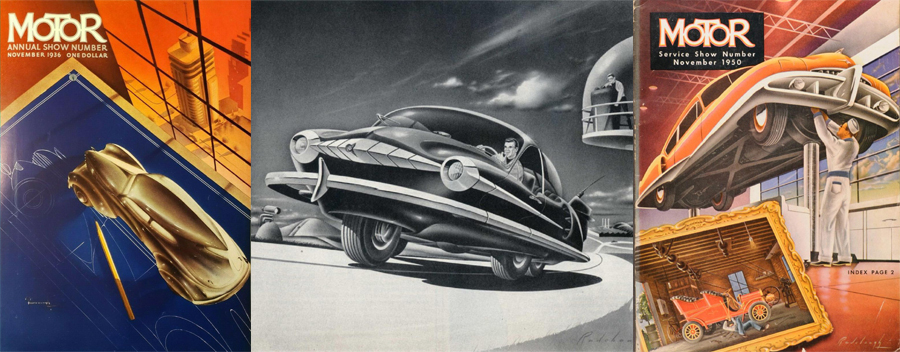
Hi Gang…
There are automotive artists that I find fascinating for their futuristic vision of what might be or in their stylings and designs which capture speed, motion, color and seemingly more than I can see and appreciate with my normal eyes. We’ve covered Howard “Dutch” Darrin quite a bit on our website and another of my favorites – Count Alexis de Sakhnoffsky. But one I’ve not shared before is Arthur Radebaugh. In passing conversation with friend and automotive historian this week, Bob Cunningham, I learned that he’s a great admirer of Radebaugh’s work too.
Bob was kind enough to put together an article for us which showcases some of Radebaugh’s artistic skill and his history and background. He’s also shared quite a few images, and I’ve placed all of these images in a new area of our website which contains historical archives. I’ll share a link to this area at the end of today’s story. Thanks to Bob for sharing today so without delay, take it away Mr. Cunningham 🙂
Arthur C. Radebaugh: Detroit’s Most Prolific Futurist Illustrator
By Robert D. Cunningham
By 1945, it had become evident that Allied forces would exhaust the Axis march across Europe and the Pacific. It was no longer a question of if, but when. Filled with a sense of optimism for the first time in fifteen years torn by war and economic depression, Americans looked to the future. Spending increased. Newspapers and magazines made predictions about postwar life. Across the mortar-pocked globe, weary soldiers ached for the tedious boredom of yesterday.
Since 1941 their expectations had been slowly and artificially raised by a growing army of industrial futurists. Technology, the futurists said, would soon transform the mundane into the marvelous; the toilsome into the convenient; the simple into the sophisticated. The world was about to be remade of aluminum and plastic.
Among the industrial prophets was the accomplished airbrush illustrator, Arthur C. Radebaugh. Born in 1906 and raised in Coldwater, Michigan, Radebaugh moved to Chicago to attend the Chicago Art Institute in 1925, but dropped out.
Nevertheless, he pursued his artistic interests in other ways. As a theater usher, he painted background scenery. As a hotel clerk, he designed a large wall mural. And as a public transportation driver, he combined his artistic skills and his interest in automobiles to design a more attractive fleet of buses.
By the mid-1930s, Radebaugh moved back to Michigan, worked as a sign painter and married his wife Nancy. After creating a few images for Esquire magazine, he became a successful freelance airbrush illustrator. His work illustrated advertising for United Air Lines, General Tire, and the Burlington-Pacific Railroad, and his realistic automobile renderings graced brochures for Dodge, Nash and Graham-Paige.
Other clients allowed the artist great latitude, and his more imaginative designs were used on the covers of MoToR magazine. Plexiglass bubble tops were among the common themes used by futurist illustrators during the war, and Radebaugh applied the idea to a series of striking automobile illustrations for Bohn Industries, manufacturer of aluminum products.
During World War II, Radebaugh helped design armored cars, bazookas and artillery for the Army. He also helped develop automobile instrument panels that could be illuminated with fluorescent paint and ultraviolet “black light” instead of traditional light bulbs.
That solution made them less visible to enemy aircraft, overhead. But he never stopped dreaming of futuristic marvels: helicopter busses; houses that revolved with the sun; amphibious motor scooters; city-to-city skyways teaming with streamlined cars and trucks; and daily rocket trips to mars on sight-seeing ships that dipped down to pick up passengers.
On the home front, his fellow futurists predicted the day when their imaginings would materialize was just around the corner. Such premature promises inspired the tired. However, when arms were finally put down in 1945, industry was ill prepared to make good on those promises. Depression-lean corporations had grown fat on the fruit of remarkably short military product development and production lifecycles, but retooling for the civilian market would take months. Material was scarce and true product evolution was years away.
By 1947, Radebaugh presided over the Detroit Art Directors Association, designed the city’s Automotive Golden Jubilee logo, and was the featured artist in Detroit’s 1947 Auto Art Exibition.
He joined Detroit’s New Center Studios—a postwar think tank—where he further experimented with fluorescents, dreamed up ideas for an overhead tramway using war surplus airplane fuselages and propellers; sketched aluminum houses built on idled aircraft assembly lines; and offered up predictions of helicopter busses and vending machine-type parking garages.
He also became a syndicated newspaper columnist, and his illustrations appeared across the country in a number of series including, “Can You Imagine?” and “Closer Than You Think.”
After Arthur Radebaugh retired in 1962, he converted his English Ford Thames van into a traveling art studio. He died on January 17, 1974, and his work was largely forgotten. Nearly 10 years later, I purchased a beautiful airbrushed illustration from a friend and began to research the “Radebaugh” signature. After months of sleuthing, I finally learned it was the original painting used for the November 1936 issue of MoToR.
During the 1990s, a Philadelphia art gallery owner unearthed a treasure trove of Radebaugh’s print negatives. He printed many of the works and hosted the first-ever Radebaugh gallery showing. More recently, the Smithsonian magazine told the story of Radebaugh’s accomplishments, and the short film, “Closer Than You Think” won Best Documentary at Comic-Con 2019.
For more information about Arthur Radebaugh, visit the Facebook page: www.facebook.com/pg/CloserThanWeThink/posts/
Summary:
Art inspires me the way innovative car design can inspire. And seeing “yesterday’s tomorrows” through the eyes of Arthur Radebaugh is a treat. Somewhat like seeing color images of art for the first time – like the scene in the 1998 movie Pleasantville. Short 2-minute video below for those of you who remember the movie:
Thanks again to Bob Cunningham for his excellent story on Arthur Radebaugh and click on this link here if you would like to see the rest of the images Bob shared with us for this story created by Arthur Radebaugh.
Hope you enjoyed the story, and remember…
The adventure continues here at Undiscovered Classics.
Geoff
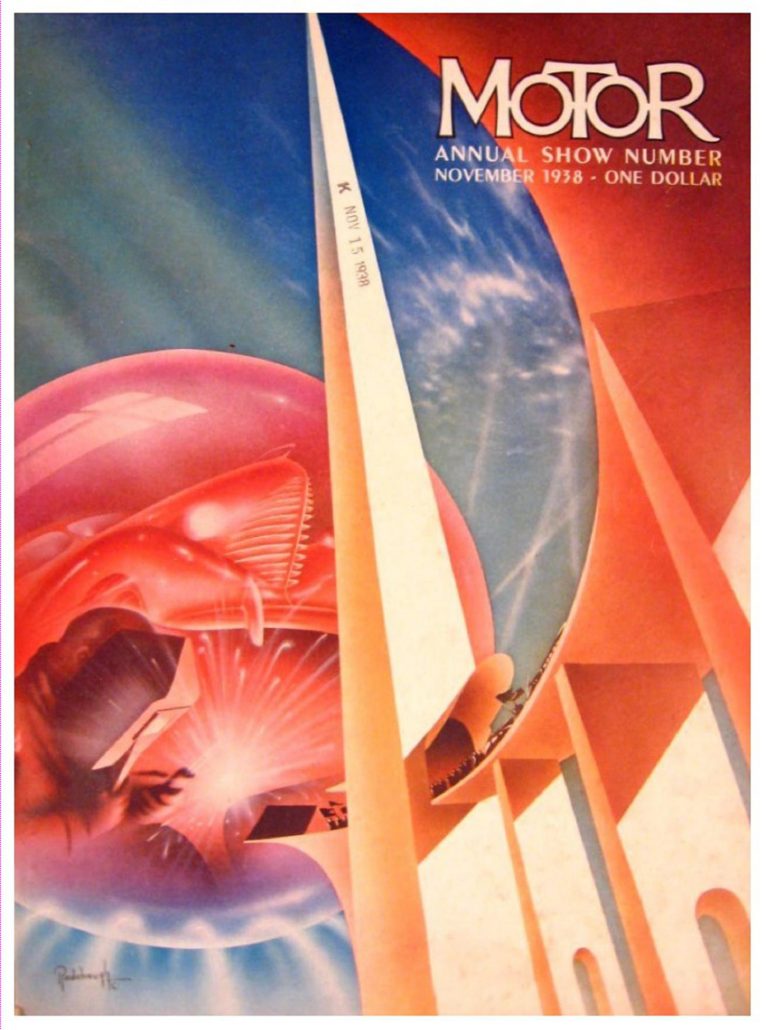

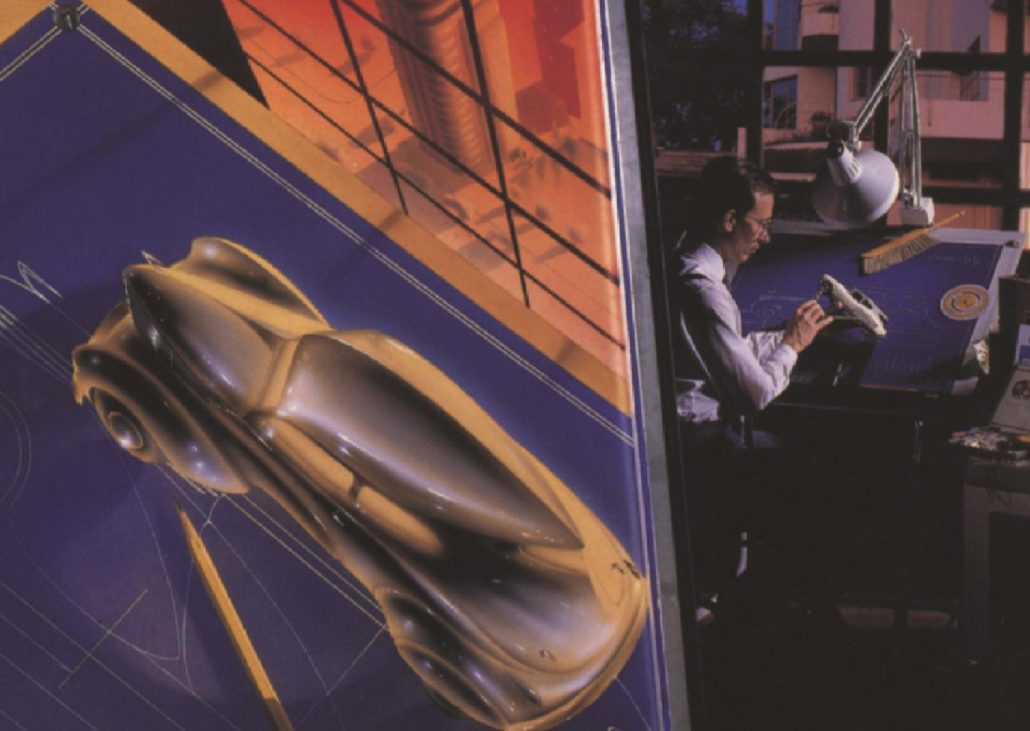
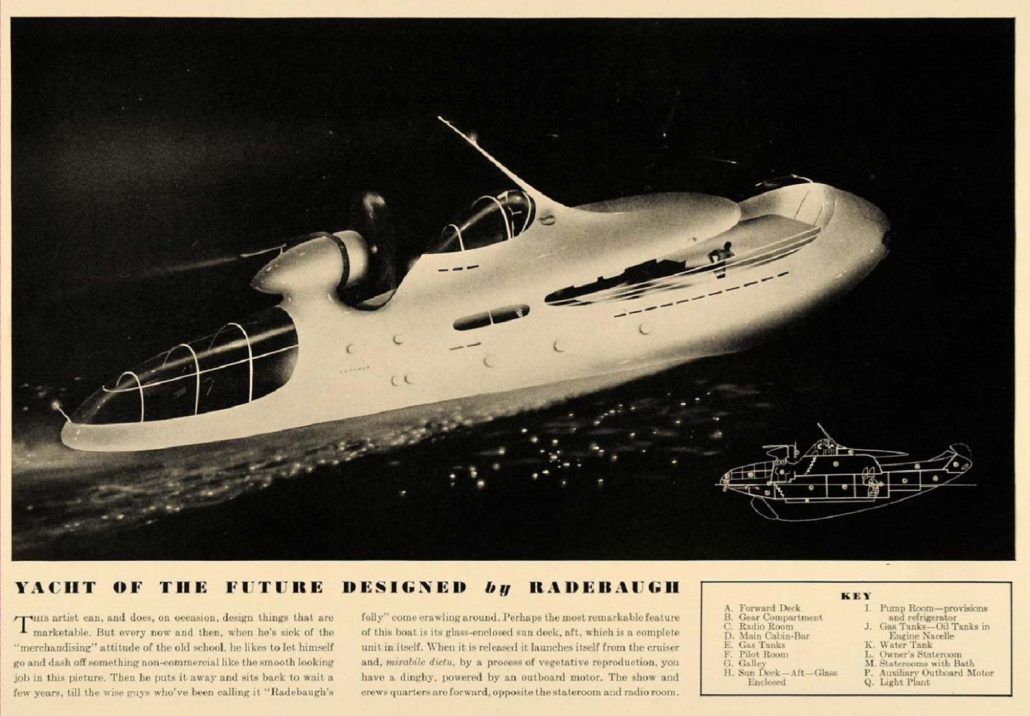
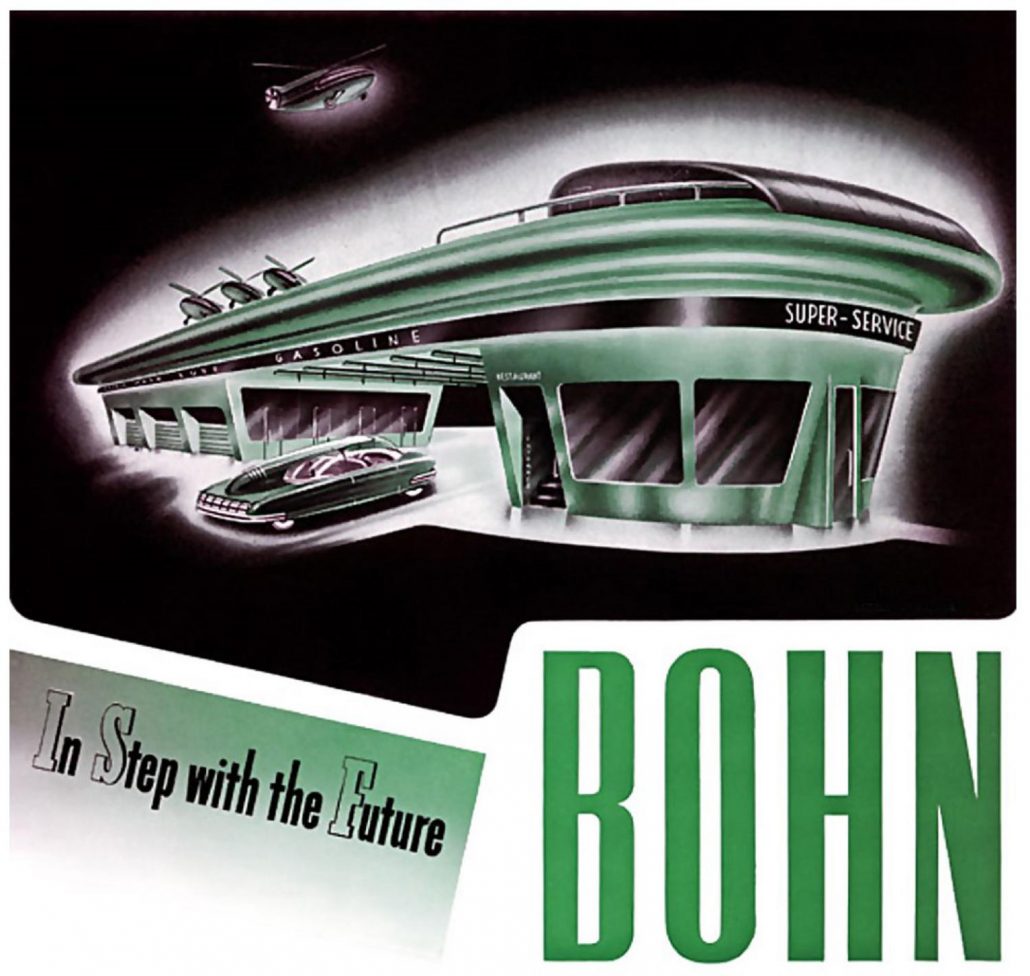
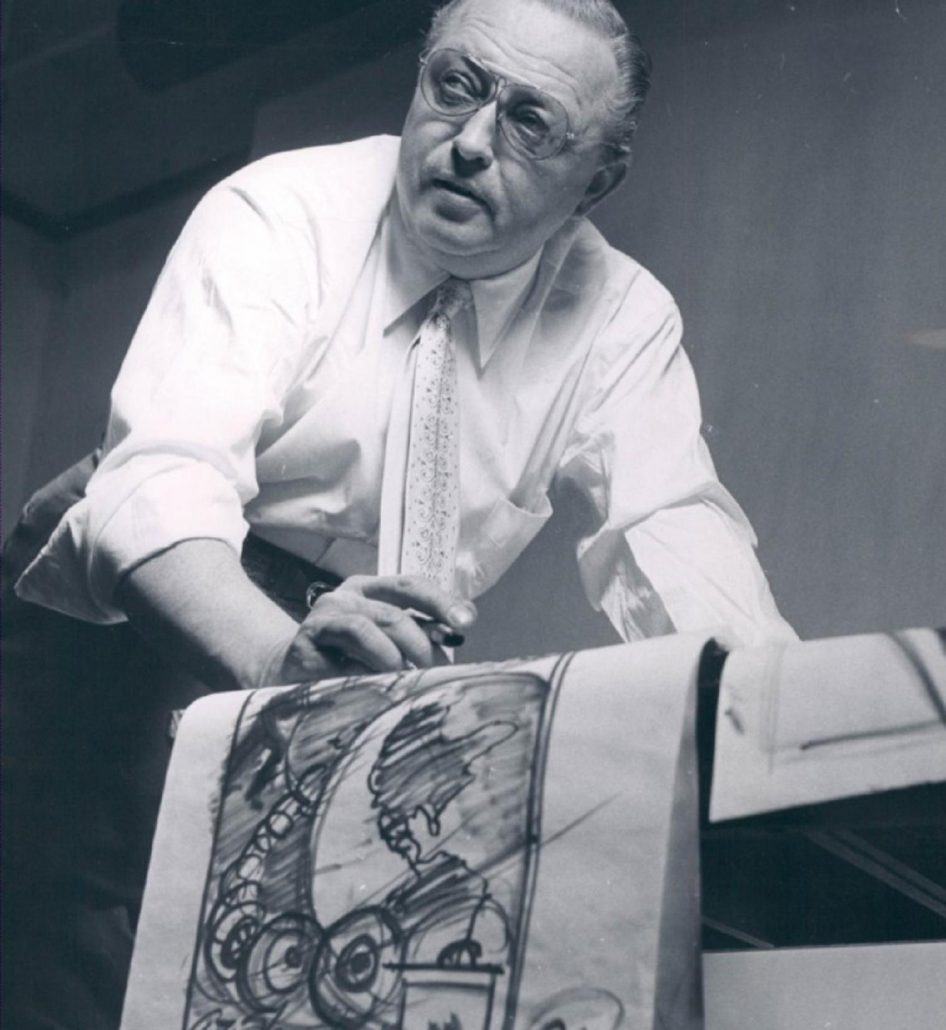
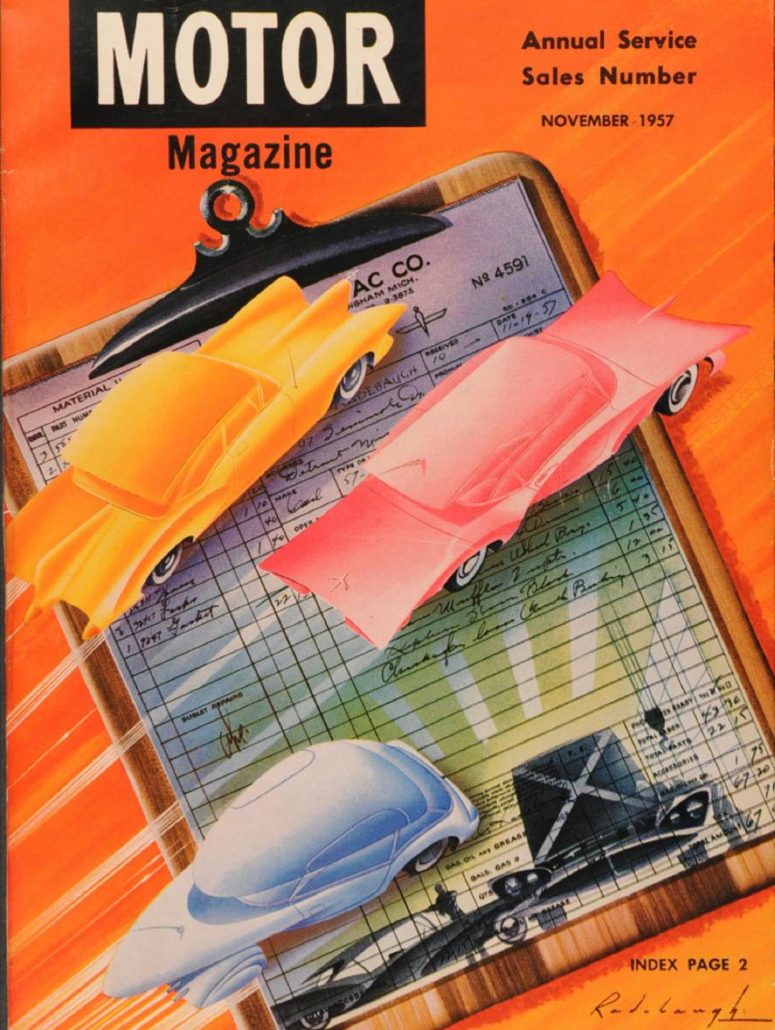
Kudos! You have several photos I’ve never seen, and they’re all great!
Todd Kimmell, the ‘Philadelphia gallery owner’ you mention as an afterthought. For some additional perspectives and a few corrections to the above story, Google ‘ Todd Kimmell Radebaugh ‘
We’ve created large, rather handsome prints from the digitally restored images from a lost commercial portfolio sent out by New Center Studios, his employers at the time. To see the selection, visit our website and find the RADEBAUGH section. Please share with friends!
http://www.thegrandreview.com
I recommend downloading and viewing the worthy documentary CLOSER THAN WE THINK. Easy to find on several platforms. Enjoy!
Here is a clip featuring my hammy self… https://vimeo.com/246227323
Arthur Radebaugh was a damned interesting fellow.
.
He certainly was an imagineer extraordinary! Not unlike Sweden’s Sixten Sason.
I well remember the Bohn ads during the war — very inspiring.
I can seen that my friend Bruce McCall hasn’t forgotten the Radebaugh style of futuristic concepts.
Great story!
One word on this fabulous article: WOW! I have admired the incredible futuristic art of Mr. Radebaugh for many years. But I never knew the inside story of this futurist who was the Syd Mead of his era. I have the highest admiration for Mr. Radebaugh as one of few who could put imagination and promise of a world yet to be all so beautifully on paper. Thanks to Geoff and Robert Cunningham for sharing this amazing visions and back story of Arthur C. Radebaugh.
Geoff and Bob , Many thanks for introducing us to Mr. Radebaugh’s fabulous vision and talent ! I have no idea how I’ve missed his work in the past ? His imagination and illustrative skills are on par with the names I’ve followed since childhood ,all of whom have inspired me to stretch my own imagination, particularly in all things automotive and architecture .
Again , thanks ,Marty Martino
Wonderful story. But Mr. Radebaugh was more than just an artist, he was a visionary. And more that that his designs were built, or copied. Look carefully at the car in the illustration at the top centered of this story. This design was copied by Pinnafarina no less in 1960. It was built for the 1960 Turin Auto Show. The car has the diamond layout of the wheels, with a Lancia engine if I remember right (power was by drive shaft to the rear wheel) But more than just the wheel layout, the car has the egg shape and twin tailfins of the Radebaugh design. Thank you so much for this story. Michael
Wonderful story! Radebaugh was more than just an artist. Look at the center illustration at the beginning of this story. The car with the diamond layout of the wheels and the tailfin in the back was actualy built by Pinnifarina no less. In 1960 a car of that design was shown at the Turin auto show, with the engine in the back and drive to the rear wheel. This car still exist and the design has such a likeness to Mr. Radebaugh design that in looks like a straight copy of his design. See Automoble Year from 1960 to be impressed by Arthur’s design.
~ Love the article and the images are phenomenal. Thanks for the ongoing education and all of the related links. Lots of new reading material to consume.